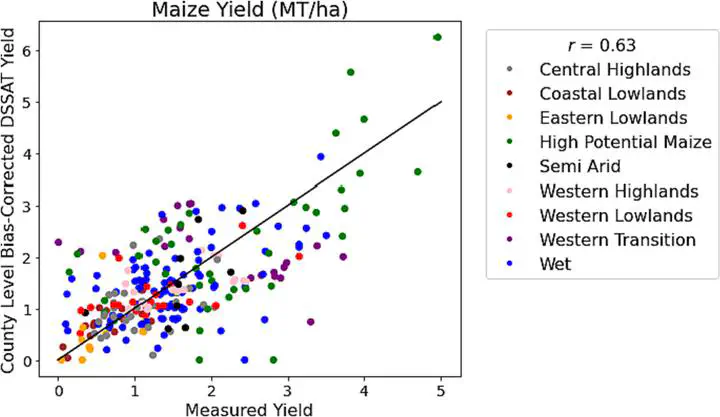Evaluation of a regional crop model implementation for sub-national yield assessments in Kenya

Abstract
Cropping system models can be used to both assess regional food security and to monitor and predict agricultural drought. Agriculture in Kenya is extremely important to both the economy and food security of the country. This study evaluated a regional implementation of widely used crop model, the Decision Support System for Agrotechnology Transfer (DSSAT), within a coupled modeling framework, the Regional Hydrologic Extremes Assessment System (RHEAS), over Kenya. The goal of this study was to assess the ability of RHEAS to simulate the annual variability of maize yields at the county level across Kenya. Satellite derived datasets were used to evaluate the land surface component of the system and seasonally disaggregated yield for 5 years was used to assess the performance of the cropping system model. The median correlation between soil moisture from RHEAS-VIC and SMAP was 0.78 and the median correlation between RHEAS VIC-ET and MODIS ET was 0.51, indicating that the model is able to capture the key drivers of the hydrological budget. Overall, RHEAS simulated yearly yield variations with a median correlation with reported yields of 0.7, with the best performance in the short rains season. However, across both seasons, the RHEAS model was positively biased on the order of 1.5 MT/ha. The overall median unbiased RMSE was 0.5 MT/ha. The RHEAS system shows skill at simulating extreme departures in anomalies, and a majority of the time (62.5%) the reported yields fall within the interquartile range of the simulations.